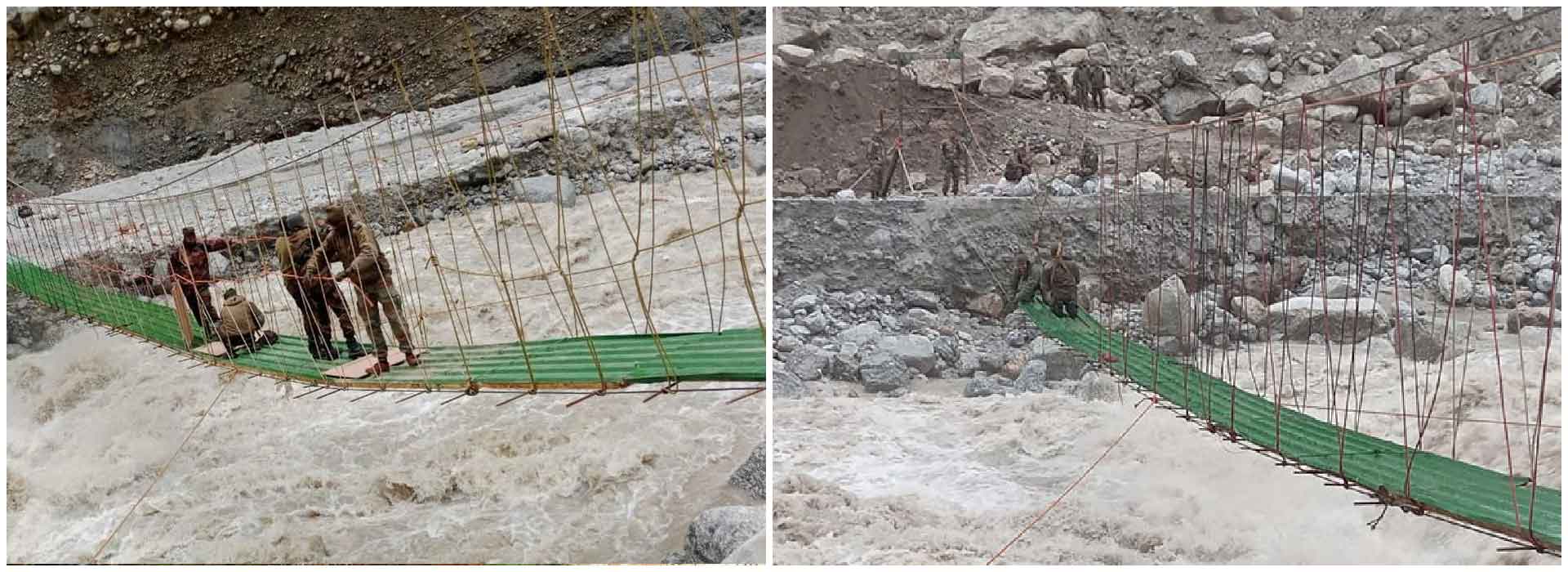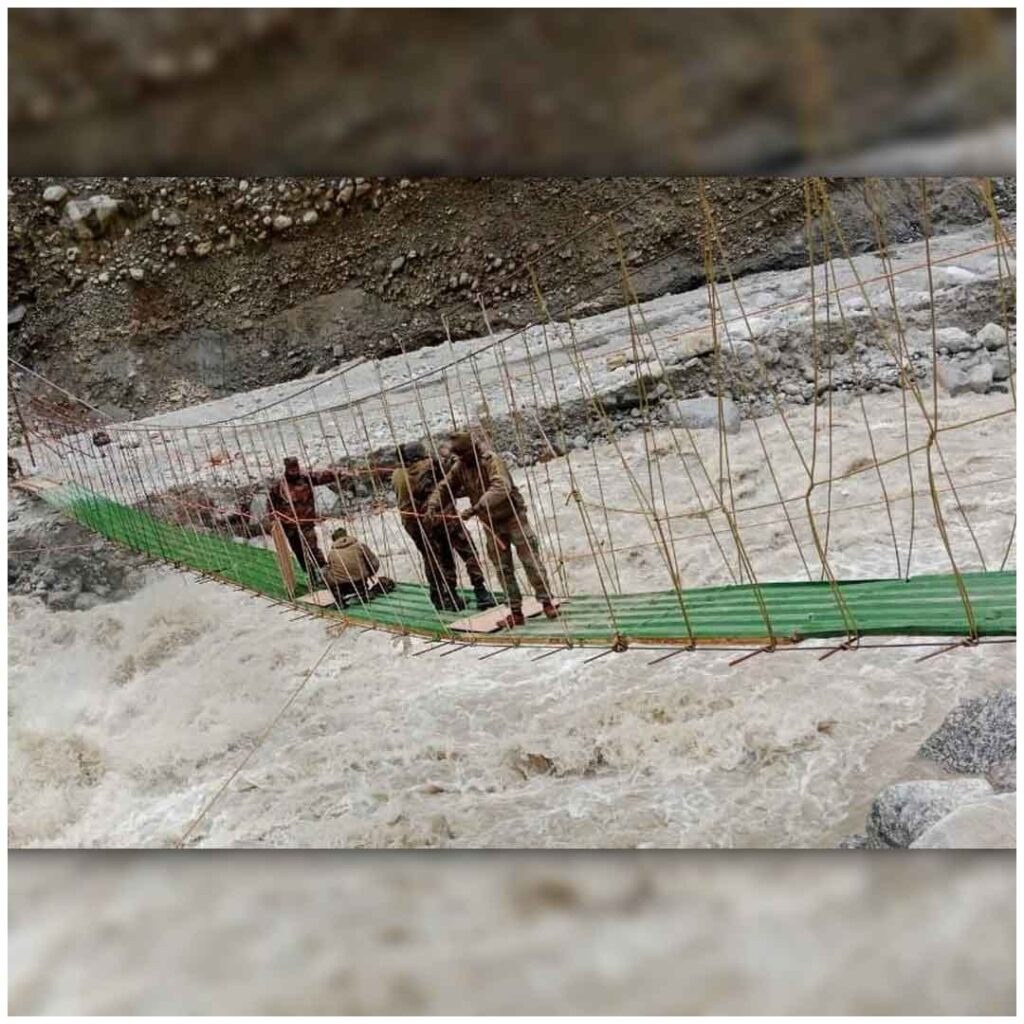Army Constructs Suspension Bridge in 48 Hours Amidst Heavy Rainfall in North Sikkim

In a remarkable feat of engineering and resilience, the Indian Army constructed a suspension bridge in just 48 hours amidst heavy rainfall in North Sikkim. This extraordinary achievement not only underscores the army’s capability and dedication but also provides a lifeline to the local communities cut off by the recent severe weather.
The Challenge of North Sikkim’s Terrain
North Sikkim is known for its challenging terrain and harsh weather conditions. The region is prone to landslides and heavy rainfall, which often disrupts connectivity and poses significant risks to the local population. The recent torrential rains had washed away a crucial bridge, leaving several villages isolated and in dire need of assistance.

The Call for Help
With the local communities stranded and essential supplies unable to reach them, the situation was becoming increasingly critical. The state government, recognizing the urgency, sought the help of the Indian Army. Responding swiftly, the army deployed a team of engineers and personnel to the site to assess the damage and plan the construction of a temporary bridge.
Rapid Response by the Indian Army
The Indian Army is renowned for its rapid response in disaster situations, and this instance was no exception. Within hours of receiving the call for help, a team equipped with the necessary materials and machinery was on its way to North Sikkim. The mission was clear: to construct a suspension bridge that could restore connectivity and allow the movement of people and supplies.
The Construction Process
Despite the relentless rain and difficult conditions, the army engineers commenced work immediately. The construction of a suspension bridge in such a short timeframe required meticulous planning, teamwork, and sheer determination. The engineers worked round-the-clock, battling the elements to ensure the bridge was completed on time.
Overcoming Adversity
The heavy rainfall posed significant challenges, making the terrain slippery and hazardous. However, the army personnel displayed remarkable resilience and ingenuity. They utilized portable lights to continue work through the night and took every precaution to ensure the safety of their team while maintaining the pace of construction.
Completion and Impact
In just 48 hours, the suspension bridge was completed, a testament to the army’s engineering prowess and commitment. The new bridge restored connectivity to the isolated villages, allowing the movement of essential supplies such as food, medicine, and other necessities. It also enabled the local population to access medical facilities and other critical services.
Community Gratitude
The completion of the bridge brought immense relief to the local communities. The residents expressed their heartfelt gratitude to the Indian Army for their timely intervention and tireless efforts. For many, the bridge was more than just a means of connectivity; it symbolized hope and resilience in the face of adversity.
The Importance of Infrastructure in Remote Areas
This incident highlights the critical importance of robust infrastructure in remote and vulnerable regions. Reliable bridges, roads, and communication networks are essential for the safety and well-being of communities, especially during natural disasters. The swift construction of the suspension bridge in North Sikkim serves as a reminder of the need for continued investment in infrastructure development.
The Role of the Army in Civil Assistance
The Indian Army has a long history of assisting civil authorities in times of need. Whether it's during natural disasters, medical emergencies, or other crises, the army’s role extends beyond defense to encompass humanitarian aid and disaster relief. Their ability to mobilize quickly and effectively makes them an invaluable asset in emergency situations.
Future Preparedness
While the army’s rapid response is commendable, there is also a need for proactive measures to prevent such crises. Strengthening existing infrastructure, implementing early warning systems, and conducting regular maintenance can mitigate the impact of natural disasters. Collaboration between the government, military, and local communities is crucial for building resilience and ensuring swift recovery.
Conclusion
The construction of a suspension bridge in 48 hours amidst heavy rainfall in North Sikkim is a remarkable achievement that underscores the Indian Army’s dedication and capability. This feat not only restored connectivity to isolated villages but also highlighted the critical importance of robust infrastructure in remote areas. The army’s swift response and tireless efforts have once again demonstrated their invaluable role in civil assistance and disaster relief.
Click to read the full article





